Archive for the ‘Roofs’ Category
Parts of a Roof
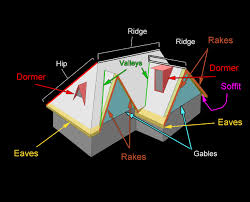
A roof is the uppermost covering of a structure. Its purpose is to keep the elements out and the inside of the building or home dry and comfortable. Depending on the climate or culture, it can be covered with anything from banana leaves to high tech solar roof tiles.
The roof angle also varies by climates; in areas that receive a lot of rain or snow the roofs have a steeper pitch or angle to allow runoff. Local roofers will have the experience and skill to work on the steeper angles.
Other parts of a roof include:
• Truss- is a framework of beams that support the roof.
• Rafters-are the beams that run from the top of the roof to the bottom.
• Eave- is the bottom edge of a roof that hangs over the rest of the home.
• Fascia- trim used to cover the rafter end of the eaves
• Soffit- is a finished under side of the eaves.
• Hip- the high point formed where two sloping sections of a roof meet. Found on roofs with more than two main faces.
• Rake- the side edge of a roof, which runs from eave to ridge or hips.
• Ridge- is the highest point of the roof also running the length of the roof.
• Valley- a trough formed by two downward sections of roof meeting at an angle.
• Decking or sheathing- are the panels that cover the rafters.
• Roof felt or underlayment- goes over the plywood decking to seal the roof from the elements.
• Shingles or tile- are the outermost part of the roof; it can be asphalt shingles, roll roofing, wood shingles, wood shakes, tar and gravel, metal panels, clay or concrete tiles. These roof materials function is to make a barrier against the elements.
• Flashing- metal pieces used to keep water from leaking in where two parts of the roof meet.
• Drip edge- edging that is at the roof end to allow water to run off.
Preparing A Roof For Hurricane Season
 Fall is a magical time of year where we build campfires and the leaves begin to change, but with the changing season also comes increased threats to your roof. Hurricanes are especially problematic this time of year; and if you live along the coast now is the time to prepare your home for the potential for upcoming storms.
Fall is a magical time of year where we build campfires and the leaves begin to change, but with the changing season also comes increased threats to your roof. Hurricanes are especially problematic this time of year; and if you live along the coast now is the time to prepare your home for the potential for upcoming storms.
Coastal Living
While living beachside may be appealing nine months out of the year, the other three are can be quite challenging. High moisture and high winds are two factors that can quickly lead to roof damage. When a hurricane comes along, an already damaged roof is likely to lead to disaster. Here is how you can prepare:
1. Inspect your roof before hurricane season starts. — Make sure your roof is in top condition before the storm rolls in.
2. Repair any missing or damaged shingles on the roof. — Having an already compromised roof can be the basis for denying an insurance claim down the road.
3. Take pictures and keep receipts of any maintenance work on your roof. — You are more likely to win your insurance claim if you can prove the roof was in good condition before the storm.
4. Consider purchasing a higher wind and water resistant roof material, like metal. — Metal roofs are more durable for coastal climates than traditional asphalt shingles.
Litigation for Glen Ellyn Roof
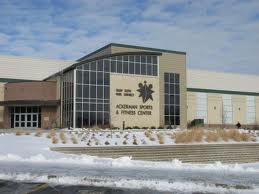
The Ackerman Sports and Fitness Center in Glen Ellyn has spent $950,000 so far to fix a leaky roof yet still had buckets and tarps to capture the water leaking from the roof. The 88,000 square foot recreation center opened in 2010, Solaris Roofing Solutions was hired in April 2012 to add a single layer insulated membrane to the original roof.
T.A. Bowman Constructors was hired to build the Ackerman Sports Center. They filed a suit in 2011 claiming the park wouldn’t allow their roofers to fix the leaks. The park district filed a countersuit against Bowman and later included project manager Professional Building Services, building designer Ollman Ernest Architects and Mutual Casualty Co. which issued the performance bond on the project.
Park District Hopes to Recoup Damages
Park officials are hoping to recover funds to make the repairs from the parties they are suing stating they are liable for the roof leaks and resulting damages.
Reports state that the roof began leaking immediately after the center opened in 2010. Approximately 20 leaks where being managed by buckets, tarps and flexible piping. The leaks seem to have been taken care of with the new roof membrane.
Dave Harris, the park district’s executive director said “It’s proven to be an outstanding fix. There’s been no water penetration during those torrential downpours a week ago. And with a fairly significant snowstorm and a melting process, we have no sign of any water infiltration.”
Flat Roof Considerations
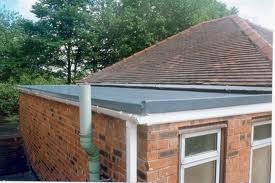 Roofs come in all sizes and shapes. Flat roofs are not the most traditional of roof shapes among family homes, but they are used for some second floor deck areas and are popular in urban areas. Flat roofs come with a different set of risks and benefits than sloped roofs, all of which should be considered before purchasing a home with a flat roof.
Roofs come in all sizes and shapes. Flat roofs are not the most traditional of roof shapes among family homes, but they are used for some second floor deck areas and are popular in urban areas. Flat roofs come with a different set of risks and benefits than sloped roofs, all of which should be considered before purchasing a home with a flat roof.
Ups and Downs
One of the reasons flat roofs are attractive is that they are easy to install and the roof materials to cover them are affordable. Because they lack pitch, or slope, a flat roof does not face the challenges of sloped roofs that require engineering efforts. Flat roofs also provide more useable space in the home, both indoors and outdoors. Indoors, a flat roof eliminates the extreme angles seen in sloped roofs; allowing for more all space and easier placement of structures like a fireplace. Outdoors, a flat roof can provide an area for decking or other types of outdoor living coverings.
Unfortunately, flat roofs do have their drawbacks. Unlike a sloped roof, flat roofs are more maintenance. Their lack pitch makes them prone to water runoff issues, which can lead to a greater need for roof repair or replacement. The life span of a flat roof can be much less than a sloped roof, unless special roof materials are used to ensure effective water drainage. Flat roofs also tend to accumulate more heat than a sloped roof. However, this can be avoided by the installation of a white roof system designed to reflect the sun’s UV rays and reduce heat absorption.
Why Roof Upgrades Are Important
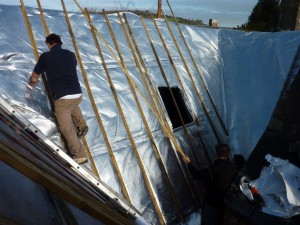 For homeowners, the roof serves to protect their home and keep the family safe from the elements. Rarely, does a homeowner give two thoughts to the roof until a problem arises. The problem with this is that roof damage can quickly spiral into bigger problems. The best approach to roof maintenance is a proactive one; and not just in terms of problems, but also in roof material upgrades.
For homeowners, the roof serves to protect their home and keep the family safe from the elements. Rarely, does a homeowner give two thoughts to the roof until a problem arises. The problem with this is that roof damage can quickly spiral into bigger problems. The best approach to roof maintenance is a proactive one; and not just in terms of problems, but also in roof material upgrades.
Benefits Of The Best
Upgrading a roof can be done in several ways. Roof repair upgrades often involve some type of roof coating, which can significant lessen the need for replacement and even boost energy efficiency. White roof coatings are one example that provide reflectivity of the sun’s rays and keep the home temperature better regulated, saving the homeowner money in heating and cooling costs. The same is true for upgrading the attic insulation and underlying base roof materials.
New roofs can be upgraded by simply choosing a higher quality product or a recycled version of a traditional product. Asphalt shingles now come in various qualities, each with different durability levels and warranty periods. A more durable product will last far longer than the bare essential product. Further, metal or slate tile roofs are more resistant to damage in most climates than as asphalt roof. The costs for installing a higher grade roof product are worth the money when the need for repair is reduced.
Home Buyers Guide To Roofs
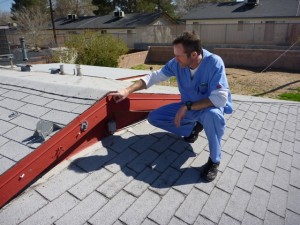 Buying a home can be a scary experience. With all of the considerations that need to be made, often one of the most overlooked aspects of buying a home is the condition of the roof. Even if the inspection doesn’t reveal any major need for roof repair, there could still be issues that should be considered prior to buying the home.
Buying a home can be a scary experience. With all of the considerations that need to be made, often one of the most overlooked aspects of buying a home is the condition of the roof. Even if the inspection doesn’t reveal any major need for roof repair, there could still be issues that should be considered prior to buying the home.
Getting The Green Light
The average home buyer knows nothing about roofs or whether the roof of their home could need help unless there is obvious signs of damage. There could be water damage, mold, pests or even structural issues with a roof that are not visible to the naked eye. Before putting in an offer on a home do the following:
Ask the inspector for the full report on the roof’s condition. Often times a roof will pass inspection, but still be in need of repair. Even if the roof damage is not a current threat, a single storm could result in major damage. Find out what the chances of needing repair are in the next two to three years and his estimate as to the remaining life of the roof.
Hire a roof contractor to perform an independent inspection. Roof contractors are more diligent in their inspection of a roof than a traditional home inspector. Not only will they be able to tell you the basics about the condition and age of the roof, they will be able to tell you whether any repairs have been made to the roof and if these repairs are holding up well. Most roofers charge less than $200 for a typical inspection, money well spent to have a professional evaluate the condition of your home’s roof.
Ask the previous owner for details about the roof. While the seller isn’t required to disclose non-essential information about the condition of the home or roof, they may be willing to share with you basic information. Find out when the roof was installed, whether it is still under warranty or if they have any paperwork from the original roofer that installed the roof. There is no guarantee that you will given this information, but it never hurts to ask.
Report Indicates Increase Demand for Roofing
According to a study from Cleveland based industry market research firm the Freedonia Group, the world roofing demand will increase worldwide by 3.8% annually until 2016.
The report indicates the growth will be fueled by an increase in residential building construction and construction industries in major developed nations. The United States and China will account for nearly 60% of the roofing demand.
Shingles will Account for 80% of Demand
Roofing materials vary in different countries, bituminous (asphalt) and tile (clay and concrete) products being the most popular. The United States uses more of the bituminous products with the heavy use of asphalt shingles, while concrete tiles still dominate the market in Asian-Pacific Region.
The report points to a major recovery in new single family housing construction in the U.S. with fast rebound growth in developed countries and typically slower growth in smaller roofing markets in developing areas.
Replacing Your Roof Could Lower Your Homeowners Insurance

After extreme weather, your roof could need replacing. Most insurance companies are going to choose roofs made from higher quality materials that will hold up against stronger weather. Many new roofs are made with the heavier, architectural grade shingles. The extra weight makes them more durable and provides an extra defense against warping.
According to Royce Williams of Royce Williams Agency in Nashville Tennessee “What homeowners don’t realize is that when a new roof is installed by an insurance company they are actually lowering their own risk. These aren’t hidden savings. It’s fairly simple, a new roof goes up – your premium goes down.”
Ask Your Agent For Discounts
Homeowners who have recently purchased a new home or replaced their roof due to storm damage should talk with their insurance agent to see if they can save money on their insurance.
Ask your agent about additional ways to save money, such as choosing a metal roof and if you use 6 nails to fasten your shingles instead of four which increases the wind resistance rating of your roof. The use of qualifying impact resistant roofing products may qualify you for a significant premium discount.
Make sure your contractor fills out the proper paperwork and then forward it on to your insurance agent.
Flipping Houses: Avoiding A Bad Roof
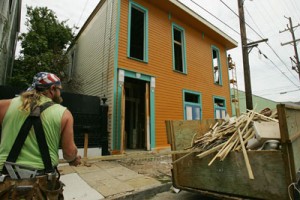 Although the real estate market has been in turmoil for a while now, home investors haven’t lost steam. In fact, many people who “flip” houses for a living have found the foreclosure saturated market to be quite lucrative. However, not all home investors are out to produce the highest quality product and some cut corners in areas that could be costly for the buyer.
Although the real estate market has been in turmoil for a while now, home investors haven’t lost steam. In fact, many people who “flip” houses for a living have found the foreclosure saturated market to be quite lucrative. However, not all home investors are out to produce the highest quality product and some cut corners in areas that could be costly for the buyer.
Cutting Corners, Adding Risk
The sole mission when flipping houses is to minimize cost and maximize profit. Unfortunately, this sometimes means skimping on materials and leaving out essential renovations. When it comes to roof repair or replacement on a home intended for flipping, more often than not the roof is neglected. What tends to happen on a home undergoing quick renovations for a quick sale is that the roof is patched to meet basic code requirements. If the home does get a new roof, it is often the bottom of the line and cheapest roof material. This leaves the buyer with some additional tasks to ensure they get a quality home.
If you are considering buying a renovated investment property or house that has been in foreclosure, make sure you look for the following:
- A detailed disclosure statement from the seller, which may discuss potential issues with the home.
- A sale history of the home to be sure the home hasn’t transferred hands more than twice in the last 90 to 180 days, this could be a sign of a bad investment track record.
- A warranty of any work completed, especially for the roof repair or replacement.
- A report from an unbiased inspector to ensure that the work was completely properly.
Solar Roofs May Generate Revenue For Residents
 Solar roof panels have become an popular green roof solution that offers many economical and environmental benefits. As one of the world’s frontrunners in innovative ideas, Dubai is considering a bold move in the generation of power.
Solar roof panels have become an popular green roof solution that offers many economical and environmental benefits. As one of the world’s frontrunners in innovative ideas, Dubai is considering a bold move in the generation of power.
Powerful Moves
Dubai is home to many technologically advanced buildings, including a proposed solar village. The city also has one of the fastest growing energy consumption rates in the world, leaving the city with a million dollar problem. In order to compensate for the near 24 GW electricity habit, the city’s electric companies are actively considering buying back the power generated from residential and commercial roof buildings.
The city conducted a study last year to determine how much local businesses and private solar panel owners were generating for their own use. The average 5MW of electricity production quickly enticed city officials into crunching the numbers of revenue for purchasing the power back from residents and building owners. If approved, the leases on these solar roof materials is expected to significantly lower costs for the city, as well as bring a little money to the pockets of Dubai occupants.







